The 2018-19 season was one to remember for Alex Chiasson. Despite just coming off a season in which he got to raise the Stanley Cup with the Washington Capitals for the first time in his career, last season may have been more memorable. He set career highs in points and goals totaling 22 goals, 16 assists and 38 points. Even with the point numbers being relatively low, he still managed to be the fifth-highest scorer on the team. The Oilers couldn’t be happier that they found themselves a relatively cheap middle-six forward who can produce, something that their team desperately needed.
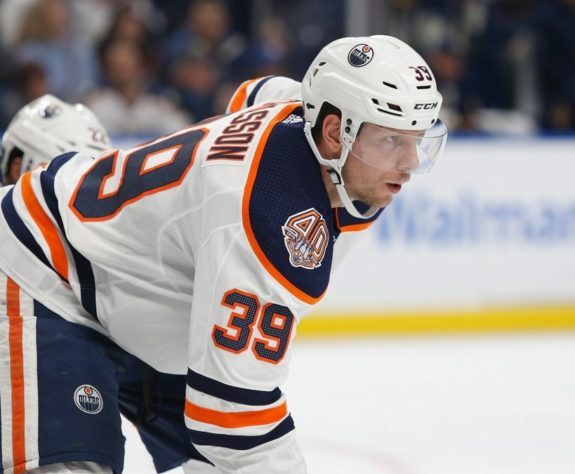
This earned Chiasson a well-deserved raise. After coming off his fourth consecutive one-year deal, he finally managed to ink a contract that gave him some balance and stability for once in his career. This contract consisted of a $2.15 million cap hit over two years with no bonuses, nothing fancy. Impossible to say any side really lost.
On his side, he can finally call a city home for over one season while making over $1 million more than when he was previously on one-year, minimum contracts. On the Oilers side, they get to potentially retain a 20-goal scorer for only $2 million a season. He still has the tools to be a decent bottom-six forward if his production goes down, something the Oilers have to prepare for.
Looking at the Numbers
The last thing Oilers fans want to hear is that one of their best offensive producers is almost certainly going to have a downfall in terms of production. However, just looking at the numbers alone, it’s likely that he won’t be as productive in this upcoming 2019-20 season.
Related: Alex Chiasson: Everyman’s Player for the Edmonton Oilers
First, a great indicator of unsustainable production for scorers is shooting percentage. Generally, the ballpark number for sustainable shooting production for players is around 10-15%. Go below that and you’re either a defenseman or an extremely inefficient shooter. Go above that and you get William Karlsson, who scored 43 goals in the 2017-18 season for the Vegas Golden Knights with a 23.4 shooting percentage (S%). That’s a couple of percentage points away from scoring every four shots.
Related: Golden Knights Star William Karlsson
The following season, he still shot a sustainable 14.2%, which resulted in 24 goals, still respectable but not nearly the 43 from the previous year. Shot volume is extremely important when it comes to determining how sustainable high percentages are along with career shooting percentage.

Chiasson lies relatively in the middle, with a 17.9 S%. Looking at numbers from the 2017-18 season, some players in the same ballpark are Matt Nieto (17.9 S%, 15 G), Claude Giroux (17.6 S%, 34 G), and Ryan Dzingel (16.9 S%, 23 G). I picked these three players for a reason and I’ll go over each one.
Matt Nieto (17.9 S%) – Worst-Case Scenario
This is a scenario that the Colorado Avalanche should have seen coming. In Nieto’s 2017-18 season, he managed to pot 15 goals in 74 games. It’s relatively solid third-line production at a first glance. However, his 17.9 S% only came on 84 shots, hardly enough of a sample size to give the shooting percentage merit.
He followed that season up with only four goals in 64 games and a S% of 4.7. I couldn’t find any other players in the last two seasons who had this severe of a drop off in shooting percentage. Safe to throw this data out as an outlier and assume by statistics that Chiasson won’t have a drop-off this drastic. Anything can happen in the sports world, though.
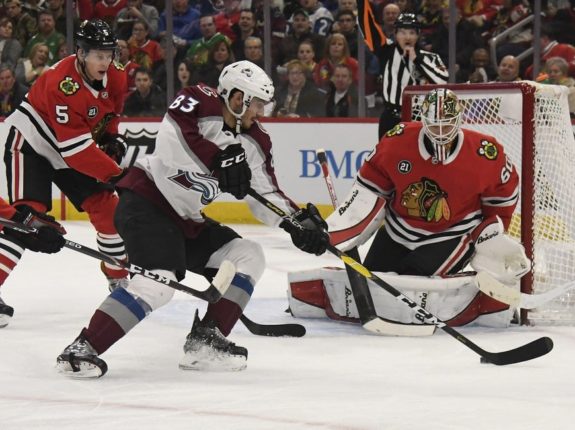
Claude Giroux (17.6 S%) – The Likely Drop-off
Giroux’s case shows exactly how important looking at career shooting percentage is. Before his infamous 2017-18 season where he managed to put up 102 points and 34 goals, he was only a 10.6 S% player. His highest year for shooting percentage before 2017-18 occurred in 2010-11, where he had a 14.8 S% with 25 goals. After that season, he cemented himself as a star in the league and was relied upon more for offense. As a result, he shot 73 more shots in 2011-12, however, only scored three more goals with 28.
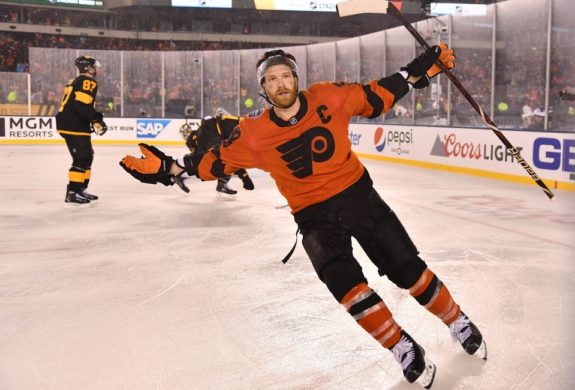
Now back to the present, Giroux shot a mere 9.6 S% with 22 goals last season. He increased his volume by 36 shots from the 2017-18 season but scored 12 fewer goals. This is an example of what adding volume can do to your shooting percentage. While you’ll ultimately score more, it will tank your percentage. If Chiasson is to drop off, this is the most likely case since he’ll be asked to do more this season. He can still be productive, however, may slightly drop off in terms of goal volume and efficiency.
Ryan Dzingel (16.9 S%) – Sustainable Production
Former Ottawa Senator, Ryan Dzingel, is a player who shows that maintaining a high shooting percentage is actually possible. In the 2017-18 season, he scored 23 goals with a 16.9 S%. That occurred on only 136 shots. Fast forward to last season and he put up a near-identical shooting percentage at 16.4%, this time scoring 26 goals on 159 shots.
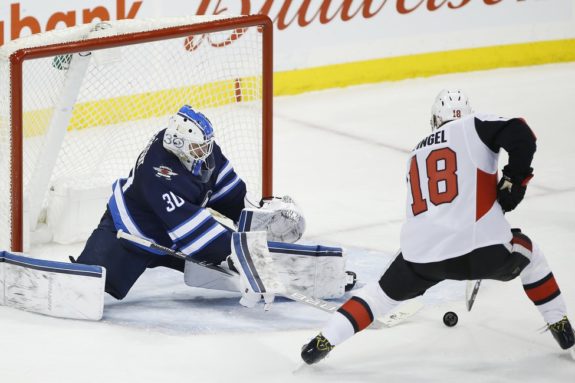
Dzingel can keep this shooting percentage sustainable due to the excess of high percentage shots. His speed allows him to create lots of two-on-ones, breakaways, and overall high-percentage shooting opportunities. Paul Byron is another great example of this archetype. He has managed to maintain very similar shooting percentages and since joining the Montreal Canadiens in 2015-16, he has held a 19.6 S% on 355 shots. So to summarize, players will have increased shooting percentages if they generate high-danger chances at a higher rate.
Applying Our Knowledge
Using HockeyViz’s Spray Charts, we can determine where Chiasson scores his goals and see if his situation is similar to Dzingel. Of the 22 goals he scored, only two were behind the faceoff dots. This means that 20 of his 22 goals were scored right in front of the net, an area with a very high scoring percentage.
Related: Does Alex Chiasson Recognize a Golden Opportunity?
However, looking at career shooting percentage, he came into last season with a career 11.5 S%, 6.4 percentage points lower. Another interesting part to note about Chiasson is that he scored 15 of his 38 points on the power play. It would go without saying that if he is to continue this success into the 2019-20 season, he must get consistent power-play time. This is almost a certainty. Even with the improved depth in the lineup, the Oilers will be looking to get every penny’s worth out of that two-year extension. It’s also a great way to give Chiasson every opportunity with no excuses to repeat that 22-goal season.
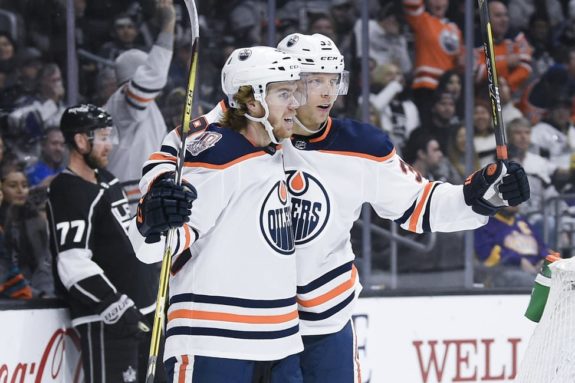
While he certainly could repeat the success and score over 20 goals again, the Oilers need to hold off on the expectation that it is repeatable. Rather, the key to success is to hope that he can still chip in when needed. Spreading the offense through players like Sam Gagner, Joakim Nygard, and Markus Granlund will absolutely be more important. As long as Chiasson doesn’t drop off like Nieto, the Oilers won’t regret this extension.